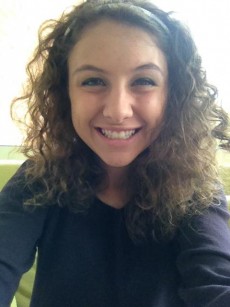Connecting the Dots: The Benefits of Studying Patterns in Diseases of the Skin

Michelle Dume
Department of Biology
Lake Forest College
Lake Forest, IL 60045
Despite our vast physical differences, human DNA is 99.9% the same. Surely, as you look at your peers, you notice that we share two eyes, a mouth, nose, and so on. Similar patterns and forms of symmetry are also seen among hair follicles and skin pores, such as fingerprints. Wounded skin also heals in a distinct pattern and fashion among all of us.
Humans share not only physical attributes and biological pathways, but also skin repair processes. As a child, you may recall a drastic fall on one of your epic adventures. Once learning that humans really cannot fly or that spider bites do not turn you into Spiderman, a scar remains in memory of that lesson. The presence of a scar may mark previous injuries or signal skin disease. One scar is actually very similar to someone else’s scar from related injuries. Acne vulgaris, a common form of skin disease often seen in teens during puberty, is an example in point. Mutated skin proteins, from various skin diseases, also have a distinct skin pattern.
Cheng Ming Chuong, from the University Hospital Schleswig-Holstein in Germany, proposed that patterns in skin disease are based on the differences in molecular composition in regional cells of the afflicted area. In his study, mutations in specific types of keratins, an important protein necessary for the formation of skin and hair, has led to keratin-specific patterned diseases. For instance, a mutation of K4 and K13 in mucosal skin is often expressed in white sponge nevus disease. Individuals diagnosed with white sponge nevus disease have thick white lesions on the inside of cheeks, tongue, and gums in the mouth. Thus, skin diseases portray specific patterns that make them visually identifiable. In addition to differences in regional skin, some skin diseases arise in specific areas on the body as well.
For some skin lesions, their formation may be found around anatomical regions, such as on Blaschko lines. This would be the case when the skin disease is not confined to a small patch but rather spans across the whole body. Blaschko lines are believed to resemble normal cell growth during the development of the fetus. Several of these lines follow a wavy formation on the head, “S” shapes or swirls across the chest and sides, “V” shapes across the back, and long looping lines on the legs. Diseases following these lines are often in the form of regions, left or right side of body, or in checkered or linear patterns. Hypomelanosis of Ito disease, a condition in which patches or streaks of skin lack pigment, is reported to occur on one side of the body. More importantly, Randall B. Widelitz and his colleagues, from the Keck School of Medicine in California, stated in their study that, “through various pathogenic mechanisms, these different skin regions may provide different susceptibilities to disease.” Widelitz and colleagues also stated that, “it is upon this dynamic landscape that skin lesions develop, become distributed, and are shaped.”
The patterns that arise from skin lesions and disease have allowed dermatologists to diagnosis disorders more efficiently. The ABCD rule of dermoscopy, a guideline of determining if melanocytic lesions are either benign or melanoma cancer, has been one of the major breakthroughs in the early 1990’s. As time goes on, dermatologists are teaming up and forming specialty group practices. Together, they hope to use their net intellect and their knowledge of skin formation patterns to better combat new skin diseases.
Note: Eukaryon is published by students at Lake Forest College, who are solely responsible for its content. The views expressed in Eukaryon do not necessarily reflect those of the College.
References
Chuong, C.M., Dhouailly, D., Gilmore, S., Forest, L., Shelley, W.B., Stenn, K.S., & et al. (2006). What is the biological basis of pattern formation of skin lesions? Exp Dermatol, 15(7), 547-564. doi:10.1111/j.1600-0625.2006.00448_1.x.
Hiromel de Silva, V.N. (2008). Blaschko lines. DermNet New Zealand. Retrieved from http://www.dermnetnz.org/topics/blaschko-lines/
Kondo, S., & Miura, T. (2010). Reaction-Diffusion Model as a Framework for Understanding Biological Pattern Formation. Science, 329, 1616-1620. doi:10.1126/science.1179047
Nachbar, F., Stolz, W., Merkle, T., Cognetta, A.B., Vogt, T., Landthaler, M., & et al. (1994). The ABCD rule of dermatoscopy. Journal of the American Academy of Dermatology, 30(4), 551-559.
Pachyonychia congenita (2015). U.S. National Library of Medicine, 1-6.
Wheeland, R.G. (2016). Predicting the future of dermatology. Dermatology Times. Retrieved from http://dermatologytimes.modernmedicine.com/news/predicting-future-dermatology
Widelitz, R.B., Baker, R., Plikus, M., Lin, C., Maini, P., Paus, R., & et al. (2006). Distinct mechanisms underlie pattern formation in the skin and skin appendanges. Birth Defects Res C Embryo Today, 78(3), 280-291. doi:10.1002/bdrc.20075.